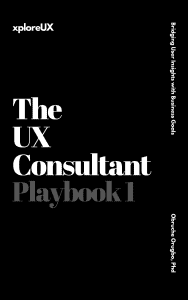
Your sign-up flow is not a form; it’s the first promise you keep. If new users don’t reach first value fast, they don’t return, and churn becomes a built-in tax on growth. Many early-stage products stumble here because small design choices create big hurdles. This article maps the most common UX mistakes in SaaS onboarding, shows why they happen, and gives fixes that a small team can ship without a full rebuild.
We’ll blend AI-powered checks with human judgement so you can spot patterns quickly and turn them into clear actions. If you want fewer cancels and more upgrades, avoiding UX mistakes in SaaS onboarding is the smartest place to start.
Poor onboarding looks cheap on a roadmap and expensive in the numbers. Trials don’t convert, support tickets rise, and paid plans quietly downgrade. Product teams add more features to compensate, which only adds noise. The root problem is usually a handful of UX mistakes in SaaS onboarding: unclear next steps, weak guidance, and slow time-to-value. Fixing these is cheaper than building yet another feature that people won’t discover.
New customers don’t need the whole tool; they need the next step. Long tours, stacked tooltips, and busy dashboards cause freeze-ups. A simple two-step path to first value beats a ten-step grand tour. To cut UX mistakes in SaaS onboarding here, gate features behind progress: unlock the next hint after the user completes a key action. Use AI session replays to see where people stall, then trim the first screen to the bare minimum.
A finance lead, a marketer, and a founder rarely have the same goal. A one-size onboarding flow wastes time and trust. Add a tiny “Help us tailor your setup” screen with three job-to-be-done choices, and branch the steps. When you personalise the first run, you remove one of the most stubborn UX mistakes in SaaS onboarding: assuming every new user wants the same thing.
Long forms, early card requests, and forced phone checks make people quit. Ask for the least you need to let them try the product. Capture extras later, once they’ve seen value. This trims friction, raises trial completion, and removes one of the more avoidable UX mistakes in SaaS onboarding.
If a user can’t complete one meaningful task in the first session, they won’t return. Map the “first value” action and place it at the centre of the flow. Hide non-essential options, add a single progress hint, and celebrate completion. Teams that do this well stop repeating UX mistakes in SaaS onboarding that bury value under menus and modals.
Tooltips help, but they don’t fix confusing structure. If a button needs three pop-ups to explain it, the button is wrong. Replace labels, move primary actions above the fold, and group related settings. This is a common place where UX mistakes in SaaS onboarding grow over time as features are bolted on without a tidy-up.
Internal testing is not the same as watching a stranger try to add a data source under a time limit. Five external sessions will reveal patterns you can’t see in the office. Record them, time the key task, and tag moments of friction. Teams that test little and often make fewer UX mistakes in SaaS onboarding because they see the product through fresh eyes each month.
New users will look for help the second something feels odd. If your help icon is hidden, answers live on a separate site, or articles read like support tickets, people give up. Place a short, friendly guide inside the flow and link to a longer article only if needed. This quiet change removes a surprising number of UX mistakes in SaaS onboarding.
“Invite your team,” “Leave a review,” “Upgrade now,” and “Connect four tools” on day one is a lot. Earn the right to ask. Sequence requests: first value, then integration, then team invite, then upgrade. When you time requests to value moments, you avoid pushy UX mistakes in SaaS onboarding that feel like upsells before trust.
Plenty of users start on a phone. Tiny tap targets, nested menus, and tables that don’t scroll kill intent. Design a cut-down mobile first run that still hits first value. It’s one of the most overlooked UX mistakes in SaaS onboarding because teams test on large screens and forget the real world.
If you can’t define “onboarded”, you can’t improve it. Pick one action tied to long-term use (for example: create first project, connect data, send first report) and measure the time to reach it. Then track each step that leads there. Without this, you’re guessing, which is the quietest of all UX mistakes in SaaS onboarding.
You don’t need a quarter to fix the first run. Create a two-week sprint with three goals: reduce steps, raise first-value completion, and cut support tickets linked to onboarding. Log your current baseline, then ship small changes: remove one field, add a progress hint, rewrite a label, move a primary button. This steady approach keeps you out of the trap of shipping features while keeping the same old UX mistakes in SaaS onboarding.
AI tools can scan flows, cluster feedback, and flag hotspots in minutes. That speed helps you spot UX mistakes in SaaS onboarding early and often. Yet the tool won’t set your strategy. A human still needs to judge trade-offs, write copy that feels kind, and craft a path that matches real jobs. Use AI for detection and grouping; use people for decisions and tone. That blend clears more UX mistakes in SaaS onboarding than either side alone.
- Define first value and put it on the first screen.
- Cut sign-up to the minimum.
- Offer a short path choice by role or job.
- Replace one tooltip with a cleaner label.
- Add a friendly progress hint with one next step.
- Place help where the user gets stuck.
- Time your asks to value moments.
Follow this and you’ll remove a stack of UX mistakes in SaaS onboarding without touching the core feature set.
A small analytics tool had strong trial traffic, weak conversion, and rising cancels. Session replays showed a pattern: new users tried to connect data, hit a jargon-heavy screen, and bailed. We mapped the first run, rewrote two labels, added a three-choice setup path, and moved the “Connect later” option to a calmer spot. First-value time dropped from eight minutes to three.
Trial-to-paid rose by 22%. The fix was not a new feature; it was removing UX mistakes in SaaS onboarding that had crept in over a year. A month later, a tidy help panel and a shorter form removed two more UX mistakes in SaaS onboarding.
“People can learn it.” Some will, many won’t. Time-poor users don’t wrestle with clunky flows.
“We need that data upfront.” Ask later, once value is clear. Completion will rise.
“Let’s add a tour.” Tours can guide, but they won’t save a messy layout. Fix the screen first.
These replies keep you from repeating the same UX mistakes in SaaS onboarding after every release.
Plain words beat clever lines. Replace brand talk with clear actions: “Create your first report”, “Connect your data”, “Invite a teammate”. Short labels lower error rates and reduce doubt. Each tidy label is one fewer UX mistake in SaaS onboarding and one more user who gets to value without help.
Don’t push payment before value. Show the upgrade path, but let users explore. A gentle nudge after the first success works better than a paywall at step one. This small change prevents salesy UX mistakes in SaaS onboarding that feel like a trap.
Great onboarding is a habit, not a one-off project. Add a recurring slot to watch two sessions, review the key metric, and ship a tiny improvement. Keep a tidy log of changes and the effect on first-value time. With this rhythm, UX mistakes in SaaS onboarding get fixed before they grow into churn.
Day 1–2: Define first value and the single success metric.
Day 3–4: Trim sign-up; move extras to later.
Day 5–6: Add a role-based branch.
Day 7–8: Rewrite labels; remove one tooltip.
Day 9–10: Add a small progress hint and inline help.
Day 11–12: Run five user tests; tag friction.
Day 13–14: Ship fixes; review the metric.
Run this once and you’ll remove a cluster of UX mistakes in SaaS onboarding. Run it each quarter and you’ll stay ahead of churn.
Onboarding is not a side quest; it’s the engine that turns interest into habit. Start by naming your first-value action, trim the path to reach it, and listen to real users. Use AI for speed and people for sense. Do this and you’ll avoid repeat UX mistakes in SaaS onboarding, lift conversions, and build a product that earns trust from the first click. If you want help mapping and fixing your flow, we run a short, AI-assisted audit that shows the top three UX mistakes in SaaS onboarding and gives you a clear plan to remove them.
Call to action: Want a quick, practical review of your first run? Book a free AI-enhanced UX audit with xploreUX. We’ll map your path to first value, flag the top UX mistakes in SaaS onboarding, and give you a two-week plan to fix them.







